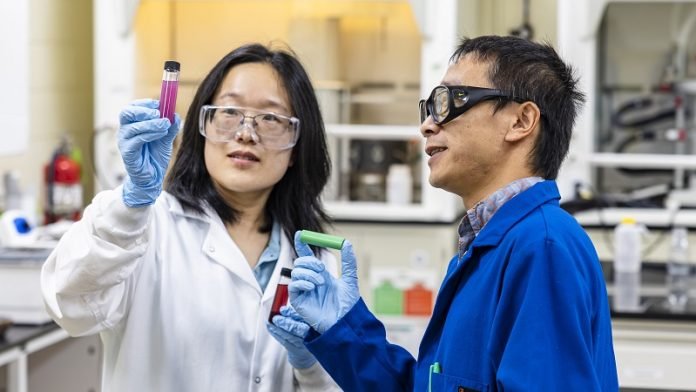
In a world increasingly reliant on batteries, from our smartphones to electric cars, we face a growing problem: what to do with used lithium-ion batteries?
Traditionally, recycling these batteries has been a challenge, often involving burning or using harsh chemicals.
But now, researchers at Oak Ridge National Laboratory (ORNL) have developed a greener, more efficient way to recycle them, as reported in the journal Energy Storage Materials.
The problem with old methods was they only recovered a few materials from batteries, using harmful chemicals that could pollute and were complex and costly at an industrial scale.
These methods also struggled to separate and reclaim important metals like cobalt and lithium, which are crucial for reducing pollution and dependence on foreign sources.
The new method by ORNL researchers is a game-changer.
It uses a solution of organic citric acid, found in citrus fruits, mixed with ethylene glycol, a common ingredient in products like paint and makeup.
This approach is not only safer and comes from sustainable sources, but it’s also incredibly effective in separating and recovering metals from the battery’s cathode, the most expensive part, which makes up over 30% of a battery’s cost.
“Our approach could reduce the cost of batteries over time,” said Yaocai Bai, part of the ORNL battery research team.
This research took place in ORNL’s Battery Manufacturing Facility, a leading center for battery research and development in the U.S.
What makes this new recycling technique so special? It managed to leach nearly 100% of the cobalt and lithium from the cathode without adding impurities.
It also efficiently separated the metal solution from other residues. The real surprise, however, was in the recovery process. Over 96% of the cobalt was recovered in just a few hours, without the need for additional chemicals usually used to balance acid levels.
“This is the first time one solution system has covered both leaching and recovery functions,” said Lu Yu, the lead researcher. “It was exciting to see the cobalt precipitate and settle out on its own. We weren’t expecting that.”
This method is not just about efficiency; it’s also about being environmentally friendly. By avoiding extra chemicals, it cuts costs and reduces the creation of byproducts or secondary wastes.
“We are glad this recycling process can pave the way for greater recovery of critical battery materials,” said Ilias Belharouak, head of ORNL’s electrification section.
Previously, researchers had tried using citric acid and ethylene glycol, but with more acid and lower temperatures, which was less effective. “We were surprised by how quickly the leaching happened in our solution,” Bai said.
“Usually, it takes 10–12 hours with an organic acid, but ours took only one.” Traditional methods with inorganic acid were slower because they included water, which limited the reaction temperature due to its boiling point.
This breakthrough by the ORNL team could revolutionize how we deal with the ever-growing pile of used lithium-ion batteries. By turning to a citrus-based solution, they are not only making recycling more effective and economical but also much kinder to our planet.
This development is a major step towards a more sustainable future in battery manufacturing and recycling.
Source: Oak Ridge National Laboratory.



